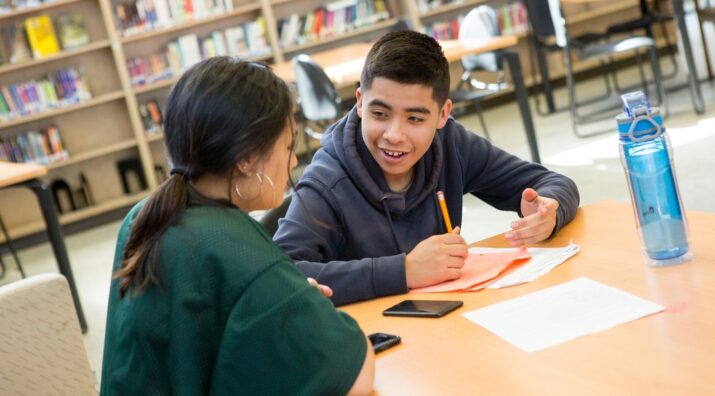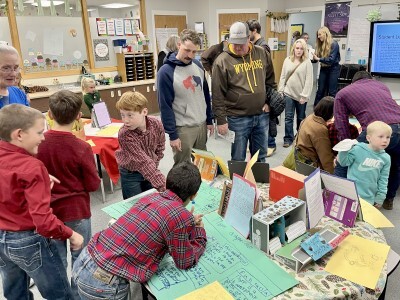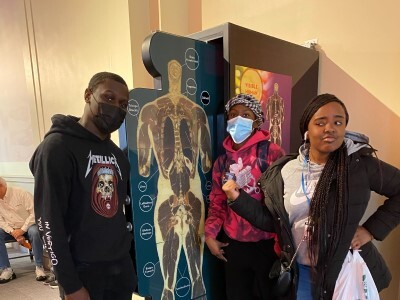Building Writing Skills, Fostering Agency: The National Writing Project’s Student Using Sources Tool
Topics

Educators are rethinking the purposes, forms, and nature of assessment. Beyond testing mastery of traditional content knowledge—an essential task, but not nearly sufficient—educators are designing assessment for learning as an integral part of the learning process.
Teachers helped the National Writing Project develop and test a peer-review tool designed to help students improve their evidence-based arguments in writing.
After piloting the National Writing Project’s (NWP) Student Using Sources Tool with eighth graders in 2017-18, Susan King and Aimee Douglas, teachers at Lebanon Middle School in Lebanon, MO, became huge advocates of using this assessment tool for supporting learning. In their view, the tool gave “students the power to improve their writing themselves.” Because they have witnessed its positive impact, King and Douglas will continue its use this year. They plan to scaffold their students’ use of the tool—starting with developing students’ understanding of the tool’s academic language, encouraging self-reflection, and ultimately building toward peer response.
NWP engaged teachers from around the country in developing, piloting, and refining the Using Sources Tool (UST) and related teaching processes as part of its College, Career, and Community Writers’ Program, designed to help students improve their ability to write evidence-based arguments. Middle and high school teachers and students who participated in piloting the student UST responded to two surveys focused on the impact of using the tool and recommendations for improvement. Students and teachers alike found that using the tool cultivates a collaborative, learning-focused environment; fosters independence; and builds complex argument-writing skills.
Cultivating a Collaborative, Learning-focused Environment
Writing classrooms commonly feature peer response opportunities. Yet, teachers and students often find that the feedback given is often not specific enough to help writers improve. Both teachers and students emphasized that the UST changed this dynamic. As King reflected,
Peer feedback is more meaningful. Instead of having students hopefully give constructive criticism, peers use the tool on their peers’ papers. Since everyone uses the same tool and used the same vocabulary, peer feedback and discussion becomes much more valuable.
It allows Aimee and me, as teachers, to build relationships. We trust the students to use this tool to provide effective feedback for each other, and they, in turn, build that same trust. Having deep, rich conversations about writing builds a classroom community that lasts not only through the year but extends into the future.
Like King and Douglas, 72 percent of student survey respondents agreed that the UST helped them offer feedback to their peers. One student explained that the UST’s language was critical in helping students to respond to each other’s writing:
...It put words to what I was trying to explain so it would make it easier to communicate what I was concerned with.
Fostering Independence
Both teachers and students found that the UST helped students improve their arguments without teachers taking sole responsibility for improvement. And, the UST seems to foster student agency in writing and developing their arguments, as described by one student,
It helped me make independent decisions about what to do next in my argument writing.
Most teachers (79%) found that after using the Using Sources Tool, their students improved their written arguments. Importantly, 69 percent of students surveyed similarly believed that they knew how to improve argument writing without the teacher telling them what to do. Teaching argument writing, especially responding to students’ papers, is labor intensive and time-consuming. Teachers’ and students’ perceptions of the UST suggest that it supports students in becoming more independent, while reducing the amount of time that teachers need to spend responding to papers.
Listen to the NWP Radio episode where teachers and students discuss how the UST fostered independence.
Building Complex Skills
In Spring 2018, 79 percent of the teachers who piloted the student UST agreed that their students demonstrated a better understanding of key argument skills after analyzing their own and peers’ writing with the UST. While many students explained how the UST helped them do a much better job of acknowledging and explaining the credibility of the sources that they used in their argument, several emphasized that the UST helped them develop complex skills. One student wrote,
It helped me use specific sources and information so it wasn't a rant. Also I made it so it wasn't one sided and gave more than one perspective.
Using source material to develop arguments is complex for learners of all ages. Once students get the hang of selecting evidence, teachers sometimes notice that students summarize their evidence or drop information in without connecting it to the claim. One student reflected that the UST helps surface this challenge:
We went and talked about what we needed to do more of and what we were pretty good at. I was pretty good at finding credible sources.... But I actually had problems with my personal thoughts, like putting in like your experience.
Working with teachers and students in Mississippi, Missouri, and South Carolina, the National Writing Project has developed a set of instructional resources for introducing the UST to students and supporting its ongoing use as part of the teaching of argument writing. The UST teaches students to analyze their own and their peers’ writing for features such as use of information from source material, inclusion of multiple perspectives, and commentary that helps tie evidence to a claim. The ability to identify and evaluate these features fosters students’ independence as writers and thinkers, and cultivates a collaborative classroom community with shared responsibility for improving student writing.
Photo courtesy of Allison Shelley/The Verbatim Agency for American Education: Images of Teachers and Students in Action. CC BY-NC 4.0.




